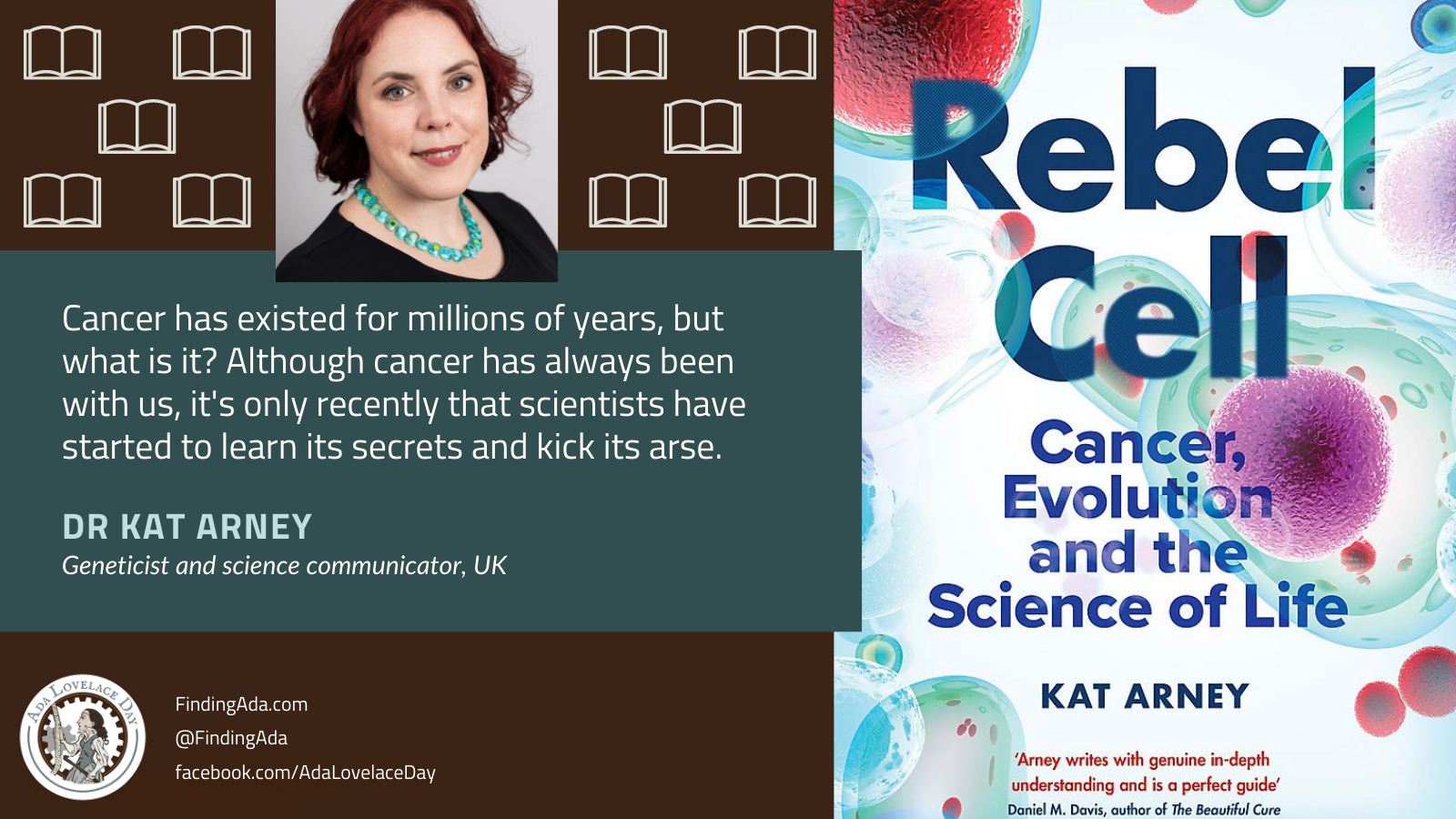Rebel Cell: Cancer, Evolution and the Science of Life, Dr Kat Arney
Cancer has always been with us. It killed our hominid ancestors, the mammals they evolved from and the dinosaurs that trampled the ground before that. Tumours grow in pets, livestock and wild animals. Even tiny jelly-like Hydra – creatures that are little more than a tube full of water – can get cancer. Paradoxically, many of us think of cancer as a contemporary killer, a disease of our own making caused by our modern lifestyles. But that’s not true. Although it might be rare in many species, cancer is the enemy lurking within almost every living creature. Why? Because cancer is a bug in the system of life. We get cancer because we can’t not get it.
Cancer starts when cells revolt, throwing off their molecular shackles, and growing and dividing out of control in a shambolic mockery of normal life. This is why we can’t avoid cancer: because the very genes that drive it are essential for life itself. The revolution has raged, on and off, for millions of years. But it was only in the twentieth century that doctors and scientists made any significant progress in understanding and treating cancer, and it’s only in the past few decades that we’ve finally begun to kick the mob’s malignant arse. Now the game is changing. Scientists have infiltrated cancer’s cellular rebellion and are finally learning its secrets.
Geneticist and science writer Kat Arney takes the reader back to the dawn of life on planet earth right up to the present day to get to the heart of what cancer really is and how by better understanding it we might one day overcome it.
Order the book on Bookshop.org.uk here and your purchase will support a local independent bookshop of your choice!
You can follow her work here:
Twitter: @Kat_Arney
Facebook: facebook.com/KatArneyWrites
LinkedIn: linkedin.com/in/kat-arney-27767b1a
Website: katarney.com




